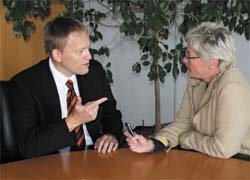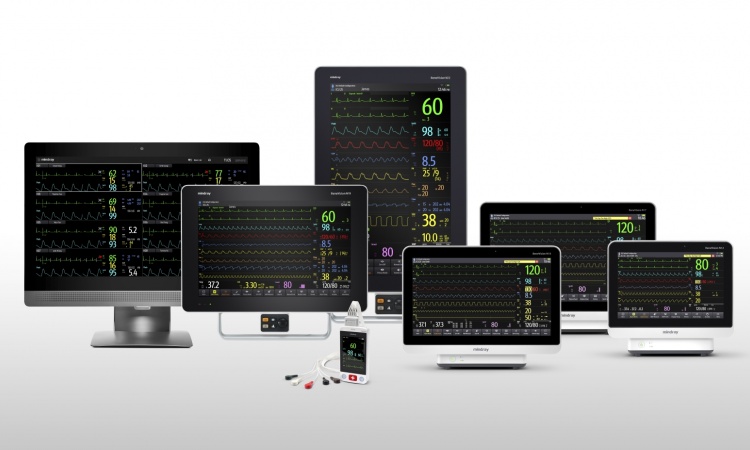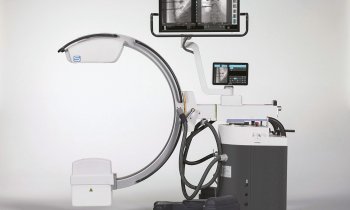New monitoring device for perfusion monitoring
Hutchinson's InSpectra StO2 Tissue Oxygenation Monitor - a portable device for treatment of trauma patients.

France & Germany – Trauma patients are being more and more monitored with a novel portable device to measure oxygen saturation in tissue. Called the InSpectra StO2 Tissue Oxygenation Monitor it was developed by the Minnesota-based firm Hutchinson Inc, previously best known for the manufacture of computer components. Daniela Zimmermann asked Peter Ickert, Hutchinson’s newly appointed General Manager for Europe, about this product shift. ‘Since the company is specialised in measuring processes and production techniques, about ten years ago we decided to move into medical technology,’ he explained. ‘The company has since carried out numerous clinical studies to validate the quality of its products in practical applications.’
The novel monitor, which measures oxygen saturation in tissue with near-infrared spectroscopy, is one of these. ‘The conventional non-invasive device, the pulse oximeter, measures only the hemoglobin oxygen saturation in the arteries. However, our product measures the oxygen in the tissue,’ he pointed out. ‘The crucial question when measuring oxygen saturation is: Does the oxygen get to the point where it is needed, namely the tissue?’
Study results have demonstrated that StO2 measurements of less than 75% might indicate serious hypoperfusion in trauma patients. The firm reports that the monitor is the only tissue oxygenation monitor designed for trauma environments, that provides a direct, absolute measurement of haemoglobin oxygen saturation in tissue (StO2), which provides trauma teams with those vital measurements and continuous monitoring during resuscitation. It uses near infrared light to illuminate tissue, then analyzes the returned light to produce a quantitative measurement of oxygen saturation in the microcirculation.
The InSpectra is primarily targeted at the trauma and emergency medicine market. ‘In that segment it’s above all the bleeding patients who benefit from it. In a trauma situation it’s very difficult to determine whether a body is sufficiently perfused. This is something that ultimately requires an invasive procedure and delay time in obtaining lab results’ he explained. ‘So a fast and non-invasive device, which on top of everything provides continuous reading, is crucial for those patients. The InSpectra generates reliable results in only 20 seconds, which means that some trips to the lab are no longer necessary. The device continuously records the values in two-second intervals, so that the oxygen saturation history in the tissue can be tracked. So, it’s currently for use throughout trauma care.
‘Unlike in the US, in Europe that includes emergency response, because here the trauma patient receives complete first treatment at the accident site.’
So the device is part of the ambulance equipment, then moves into a hospital with the patient and emergency doctor?
‘Yes. InSpectra is part of the emergency chain, at present primarily in intensive care units (ICUs) and shock rooms. However, in Germany and France we are in the process of evaluating the system in ambulances and emergency doctors’ vehicles.
The emergency market is quite saturated, so who, in particularly would want the InSpectra?
‘Everyone who wants to know whether a patient’s tissue is sufficiently saturated with oxygen and whether that saturation is not being compromised by unrecognised haemorrhages. The trauma team can only react in time if this is known - and with the help of this device it can react much earlier than before. We offer continuous measurement, which means changes can be recognised in real-time – and non-invasively! That means the device can be used on the spot, by an ambulance team.’
In that field of application it is necessary to get readings fast. How was that solved?
‘Yes, time is crucial. Our procedure is very simple: you just have to apply a sensor to the patient’s thenar eminence – and that’s something every trained trauma team member can do.
Contact: biom.eu@hti.htch.com;
More information: www.htibiomeasurement.com
31.08.2007









